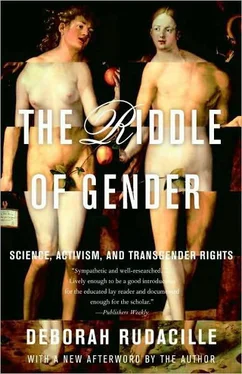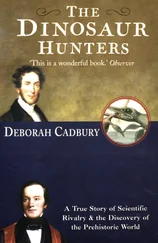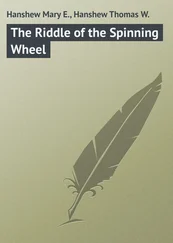Like many of the transmen I interviewed, Kennard had to overcome deep-seated negative feelings about masculine identity and behavior in order to proceed with his transition. He didn’t want to be a “man” as manhood is defined in our culture, and yet, he felt that he had no other choice because he was not a woman either. “People say that gender is what’s between your ears and not between your legs, but I don’t know,” he says. “I just didn’t belong in the girls’ pile. It’s sort of an exclusion thing, rather than inclusion. I just felt like I didn’t belong over there. If we have a binary system, and there are only two choices, I belong here. And I like being over here. I’m really comfortable being over here.”
These observations lead me to the most salient fact that my conversations with transsexual people have illuminated: though the way we express gender is clearly influenced by culture, gender identity itself seems far too deeply embedded to be purely an artifact of culture. There are few benefits to adult sex reassignment, other than the feeling that one’s body and social role finally reflect one’s inner sense of self. The process of sex reassignment is physically and emotionally grueling, and hugely expensive in terms of money, time, and lost personal relationships. Most of my transsexual sources knew from a very young age (typically before age five) that there was something different about them. Often they spent decades trying to understand the source of that difference and come to terms with the implications of their process of self-discovery. Those who decide to physically change their sex then spend a number of years committed to the process of transition; the outcome is a series of painful surgeries. No one would undertake this arduous quest unless driven to it by acute misery. I have been told by person after person, “It was this or suicide.”
Transgendered people who do not surgically transition, who live with bodies at odds with their gender presentation, court even greater risks, enduring the constant threat of discovery and exposure. The penalty for such transgression is often brutal. Many people have heard of the murder of Brandon Teena (nee Teena Brandon), the subject of the film Boys Don’t Cry, but few know that such murders are commonplace. In 2002 alone, twenty-three people in the United States were slain in what appear to have been transgender hate crimes. For example, in October 2002, while at a party, seventeen-year-old Gwen Araujo was dragged into a garage, where she was beaten and strangled by three young men who had discovered that she was male-bodied. Her body was then dumped in the desert. It took two weeks for the other young people present at the party to report the murder. Two months before Gwen Araujo’s death, on August 12, 2002, Stephanie Thomas, nineteen, and Ukea Davis, eighteen, were shot to death as they sat in their parked car a block from the apartment they shared in Washington, D.C. Davis and Thomas had lived as women since their early teens, and became close friends after meeting at a support group. Unlike Araujo, whose “secret” was unknown to many of her acquaintances, Thomas and Davis were well known and apparently well liked in the southeast D.C. neighborhood where they grew up. Their openness did not protect them. Each was hit more than ten times in the head and upper body by bullets fired by a passenger in a passing car, which, according to witnesses, turned around and released a second volley of bullets before speeding off. Despite a $10,000 reward for information leading to the arrest and indictment of a suspect, the identity of the killer or killers remains unknown.
A vigil for Thomas and Davis was held a few days after their deaths, ironically at the very same intersection where, in 1995, Tyra Hunter, a transgendered hairdresser, had lain bleeding to death after an automobile accident. Paramedics arrived on the scene immediately after the accident, but while stripping Hunter to assess her condition, they discovered her male genitalia, jumped back in shock, and began to ridicule her. As Hunter lay dying (but still conscious), the EMT team continued to mock her; she died shortly afterward in the ER from blood loss. In 1998, her mother was awarded $2.8 million in damages in a wrongful death lawsuit, based on negligence by the D.C. Fire Department and malpractice by an ER physician. “Tyra’s story is surprisingly commonplace and speaks to the fears of most transsexuals [sic] who sometimes feel pressured to undergo expensive sexual reassignment surgery and to alter their legal documents specifically to avoid such nightmares,” wrote Sarah D. Fox, Ph.D., a neurobiologist and communications director of It’s Time, Ohio!, a gay, lesbian, bisexual, and transgender (GLBT) lobby organization, after the verdict was announced. The drive to express an inborn gender identity must be strong indeed to compel individuals such as Teena, Araujo, Thomas, Davis, and Hunter to face the kind of hatred that led to their deaths. Milton Diamond, professor of anatomy and reproductive biology at the University of Hawaii, explains the violence and incomprehension suffered by transgendered people simply: “Nature loves variety. Society hates it.”
The transgendered and transsexual people whom I interviewed for this book were kind enough, and courageous enough, to share their stories with me. Most of the individuals whose stories are contained in these pages are “success stories”—they are primarily well-educated, middle-class white Americans whose privileged socioeconomic status contributed to their positive outcomes. In this arena, as in so many others, race, class, and economics play a huge role. Yet even with all their advantages, the individuals profiled in this book grappled with an enigma that might have consumed them, had they not found the courage and strength to endure the struggle, and the support and assistance they required. Each narrative chapter of the book is followed by the edited transcript of an interview, which provides commentary on the chapter preceding it and context for the chapter that follows. This structure will, I hope, reflect something of my own journey as I undertook my research and will enable the reader to recognize what I soon recognized myself—that the larger historical narrative is in fact composed of many individual narratives, each worthy of the telling. I am only sorry that I wasn’t able to include all of the stories I heard over the past few years, or the full text of every interview.
Like politics and religion, the issue of nature versus nurture with respect to gender is one that invariably gives rise to passionate debate. I do not expect that this book will convert people who believe that gender differences are grounded entirely in social conditioning; nor do I believe that the book will eradicate the bigotry, discrimination, and violence suffered by transgendered, transsexual, and intersexual people. But I do hope that the narrative history and dialogues within its pages will promote greater understanding and acceptance of a group (or groups) of people who typically want nothing more than to live their lives in peace and be able to enjoy the same civil status and protections granted to others.
I also hope to show that the history contained in these pages is, in a very real sense, a shared history. The growing visibility of transsexual, transgendered, and intersexual people has coincided with a radical questioning and reshuffling of traditional sex roles among people who consider themselves normatively gendered. The boundaries of gender were once very clearly drawn in our culture; we are not as far removed from the rigidity and repression of traditional sex roles as we sometimes like to pretend. At the same time we remain baffled by the still unfolding gender revolution; what does it mean to be a man or a woman, and how can we best achieve fulfillment of our identities as man or woman? I entered into the research for this book partly to help myself resolve that ongoing internal debate. Along the way I discovered that each of us has been profoundly affected by the questions posed by the individuals described here, and by the answers that science has provided, and will continue to provide, to the riddle of gender.
Читать дальше












